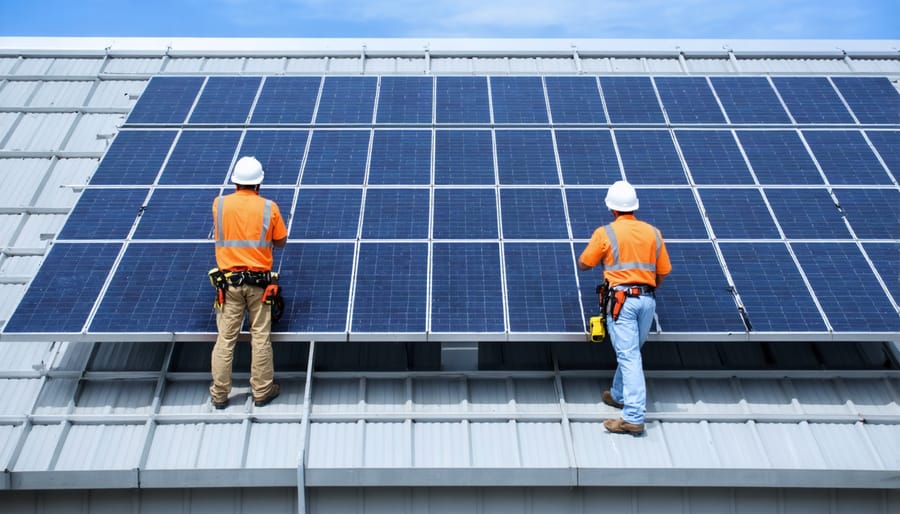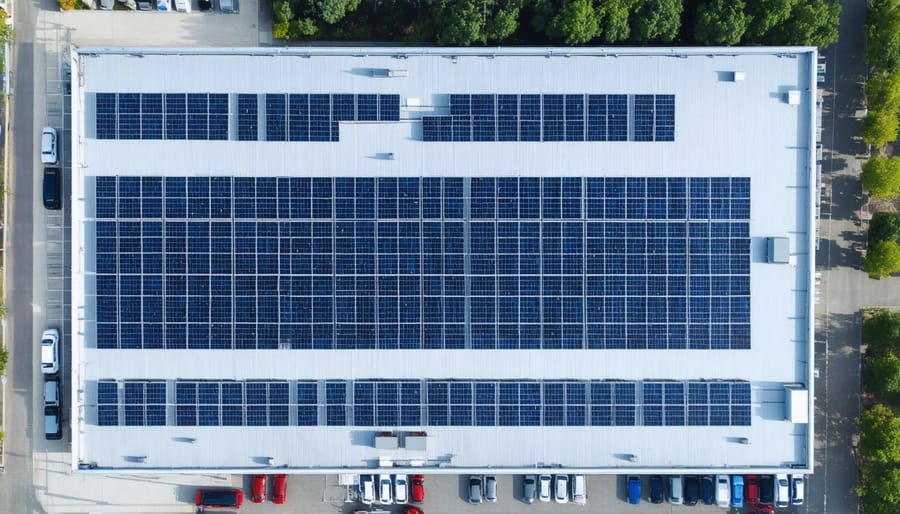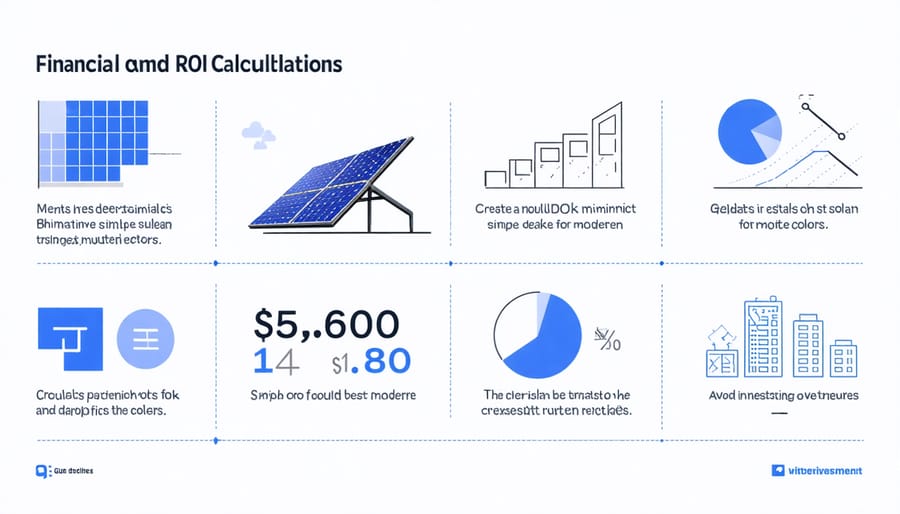Empowerment energy represents a transformative fusion of renewable technology and economic opportunity, creating sustainable pathways for communities to control their energy future while building lasting prosperity. As businesses and municipalities increasingly seek energy independence, solar installations and community-owned renewable projects have emerged as powerful catalysts for local economic development, generating both clean power and sustainable revenue streams.
The convergence of falling renewable energy costs, innovative financing models, and growing environmental consciousness has created an unprecedented opportunity for organizations to leverage clean energy investments into tangible economic benefits. From job creation and workforce development to reduced operational costs and new revenue opportunities, empowerment energy initiatives are delivering measurable results across diverse sectors and communities.
This shift toward energy democracy isn’t just about environmental sustainability – it’s about economic resilience. Forward-thinking organizations are discovering that investments in renewable infrastructure can simultaneously address climate challenges, reduce long-term costs, and create new economic opportunities. By democratizing energy production and distribution, communities are building more robust local economies while taking concrete steps toward a more sustainable future.
As we examine successful implementations across the country, a clear pattern emerges: organizations that embrace empowerment energy aren’t just switching power sources – they’re fundamentally reimagining their relationship with energy as a driver of economic growth and community development.
The Economic Power of Solar Energy
Direct Cost Benefits
The economic benefits of solar power are immediately evident in reduced operational costs and enhanced financial stability. Organizations implementing solar solutions typically see a 40-60% reduction in their electricity expenses within the first year of installation. These savings compound over time, with most systems paying for themselves within 4-6 years.
A comprehensive analysis of 500 commercial installations revealed average annual savings of $47,000 for medium-sized businesses, with some organizations reporting savings exceeding $100,000. Additionally, organizations benefit from protection against rising utility rates, which historically increase by 2-3% annually. Solar installations effectively lock in electricity rates for 25+ years, providing predictable energy costs and improved budget forecasting capabilities.
Government incentives and tax benefits further enhance the financial appeal, with accelerated depreciation and renewable energy certificates reducing initial investment costs by up to 30%. Modern solar technologies also offer enhanced monitoring capabilities, allowing organizations to optimize energy consumption patterns and maximize return on investment through data-driven decision-making.
Job Creation and Market Growth
The solar energy sector continues to be a powerful driver of economic growth, creating diverse employment opportunities across the value chain. Recent industry analyses show that solar installations create 3-4 times more jobs per megawatt than traditional energy sources. From manufacturing and distribution to installation and maintenance, the sector offers robust career paths that support local economies.
A key factor in this growth is the emphasis on renewable energy workforce development, which has led to the creation of specialized training programs and certification paths. These initiatives ensure a skilled workforce ready to meet increasing market demands.
Market expansion in the solar sector has been remarkable, with annual growth rates averaging 20-25% over the past five years. This growth is driven by declining technology costs, supportive policies, and increasing corporate commitments to sustainability. Small and medium-sized businesses are particularly benefiting from this expansion, with many establishing themselves as local solar installation and maintenance providers.
The multiplier effect of solar industry growth extends beyond direct employment, stimulating activity in adjacent sectors such as construction, electrical services, and professional services. This comprehensive economic impact makes solar energy a cornerstone of sustainable economic development strategies.

Business Success Stories

Manufacturing Sector Case Study
Superior Manufacturing, a medium-sized industrial facility in Colorado, demonstrates the transformative potential of solar energy implementation in the manufacturing sector. In 2019, the company installed a 1.2MW solar array system across their 150,000-square-foot facility’s rooftop and adjacent ground space.
The initial investment of $2.1 million was offset by federal tax incentives and state rebates, reducing the net cost to $1.4 million. The system generates approximately 1.8 million kWh annually, covering 75% of the facility’s energy needs. This implementation resulted in an immediate 60% reduction in monthly utility costs, with average savings of $15,000 per month.
Beyond direct energy savings, Superior Manufacturing leveraged their solar installation to secure contracts with sustainability-focused clients, resulting in a 22% increase in business partnerships within the first year. The company also reported a 15% improvement in employee satisfaction scores, attributed to their commitment to environmental responsibility.
The project achieved ROI within 4.5 years, significantly faster than the projected 6-year timeline. Additional benefits included reduced exposure to energy price volatility and enhanced grid resilience during peak demand periods. Superior Manufacturing’s success has inspired five neighboring businesses to pursue similar solar initiatives, creating a ripple effect of sustainable energy adoption in their industrial park.
Commercial Real Estate Success
Commercial real estate properties across the globe are experiencing remarkable transformations through strategic solar energy implementations. Modern solar solutions for commercial properties are delivering substantial returns on investment while enhancing property values and tenant satisfaction.
Consider the success story of Summit Business Park in California, which implemented a 500kW solar installation across its multiple buildings. Within the first year, the property reduced its energy costs by 40% and attracted environmentally conscious tenants willing to pay premium rates. The installation’s payback period was just 4.5 years, with an expected ROI of 300% over the system’s lifetime.
Similarly, the Melbourne Commercial Centre demonstrated how solar integration can transform aging buildings into modern, energy-efficient spaces. Their 300kW system not only reduced operational costs but also increased the property’s market value by 7%. The installation became a key selling point for potential tenants, resulting in a 15% increase in occupancy rates.
These implementations showcase how commercial properties can leverage solar energy to:
– Reduce operational expenses
– Increase property market value
– Attract quality tenants
– Generate additional revenue streams
– Meet sustainability requirements
– Enhance corporate social responsibility profiles
The success of these projects highlights the growing trend of commercial real estate owners using renewable energy as a strategic asset to drive business growth and competitive advantage.
Community Economic Benefits
Local Economic Growth
Solar energy projects serve as powerful catalysts for local economic development, creating multifaceted benefits that extend far beyond clean power generation. These initiatives generate substantial job opportunities across various sectors, from initial installation and maintenance to manufacturing and distribution of solar components. Studies show that solar projects typically create 3-4 times more jobs per dollar invested compared to traditional energy infrastructure.
Community-driven green energy projects particularly demonstrate remarkable economic impacts, often resulting in increased property values and expanded tax bases for municipalities. Local businesses benefit from reduced operating costs, while the construction and maintenance phases inject significant capital into regional economies.
The multiplier effect of solar investments is substantial, with every dollar spent on solar development generating approximately $2.50 in additional economic activity. This includes increased spending at local businesses, growth in supporting industries, and the creation of new entrepreneurial opportunities. Furthermore, municipalities that embrace solar initiatives often attract additional clean energy investments and environmentally conscious businesses, creating sustainable economic growth cycles that benefit the entire community.
In areas with established solar projects, studies indicate a 15-20% increase in local business activity within the first two years of implementation, demonstrating the tangible economic advantages of renewable energy adoption.
Property Value Enhancement
Installing solar energy systems significantly enhances commercial property values, offering both immediate and long-term financial benefits. Studies show that buildings with solar installations command premium prices, with valuations typically increasing by 3-8% compared to similar non-solar properties.
The value enhancement stems from multiple factors. First, solar-equipped properties demonstrate substantially lower operating costs, making them more attractive to potential buyers and tenants. Energy-efficient buildings also tend to have higher occupancy rates and command premium lease rates, typically 2-3% above market average.
Commercial properties with solar installations often qualify for various green building certifications, such as LEED, which further increases their market value. These certifications signal environmental responsibility and operational efficiency to stakeholders, enhancing the property’s overall marketability.
Recent market analysis reveals that solar-equipped commercial properties spend 24% less time on the market compared to conventional properties. Insurance companies increasingly offer preferential rates for solar-equipped buildings, recognizing their reduced operational risks and enhanced resilience.
The property value increase typically exceeds the initial solar installation investment within 5-7 years, creating a compelling return on investment for property owners while providing a hedge against rising energy costs and strengthening the overall asset portfolio.
Implementation Strategies
Financial Planning and ROI
Calculating the financial impact of renewable energy investments requires a comprehensive analysis of initial costs, ongoing expenses, and projected returns. A typical solar installation’s ROI calculation should consider equipment costs, installation fees, maintenance requirements, and available incentives or tax credits.
To determine potential savings, start by analyzing your current energy consumption patterns and costs. Most organizations can expect energy bill reductions of 30-60% after solar implementation, with payback periods ranging from 5-10 years depending on local utility rates and solar conditions.
Key financial metrics to consider include:
– Net Present Value (NPV) of the investment
– Internal Rate of Return (IRR)
– Levelized Cost of Energy (LCOE)
– Annual energy production estimates
– Maintenance and replacement costs
Many organizations find success with Power Purchase Agreements (PPAs) or solar leases, which can eliminate upfront costs while still providing immediate savings. These financing options typically offer 15-25% reduction in energy costs from day one.
For maximum ROI, consider:
– Federal and state incentives
– Depreciation benefits
– Carbon credit opportunities
– Utility company rebates
– Renewable Energy Certificates (RECs)
Regular monitoring and maintenance ensure optimal system performance and help maintain projected returns. Most solar installations carry 25-year warranties, providing long-term financial predictability and stable energy costs. Annual maintenance costs typically range from 0.5-1% of the initial system cost.

Available Incentives
Current federal and state governments offer substantial incentives to organizations implementing renewable energy solutions. The federal Investment Tax Credit (ITC) provides up to 30% of the total system cost for solar installations, with additional bonuses for projects meeting domestic content requirements or serving low-income communities. This credit can be transferred or monetized, offering immediate financial benefits even for non-taxable entities.
State-level programs vary but commonly include performance-based incentives, grants, and renewable energy certificates (RECs). Many utilities offer additional rebates and net metering programs, allowing organizations to offset their energy costs through excess power generation. Property Assessed Clean Energy (PACE) financing enables businesses to fund projects with no upfront costs, while Modified Accelerated Cost Recovery System (MACRS) depreciation allows for equipment cost recovery over five years.
Several states have implemented Solar Renewable Energy Credit (SREC) markets, where organizations can sell credits generated by their solar systems for additional revenue. Local governments often provide property tax exemptions for renewable energy improvements and expedited permitting processes. For non-profit organizations and municipalities, specialized grant programs and technical assistance are available through state energy offices and federal programs like the Rural Energy for America Program (REAP).
Partnership Opportunities
Strategic partnerships are essential for scaling empowerment energy initiatives and maximizing their impact. Organizations can explore collaborations with utility companies, local governments, and financial institutions to create comprehensive energy solutions. These partnerships often lead to innovative funding mechanisms, including power purchase agreements (PPAs), energy performance contracts, and specialized financing programs.
Many state and federal agencies offer grants, tax incentives, and rebate programs specifically designed for renewable energy projects. The Department of Energy’s loan guarantee program and the Rural Energy for America Program (REAP) provide substantial funding opportunities for qualified organizations. Additionally, private sector partnerships with energy service companies (ESCOs) can facilitate turnkey solutions with minimal upfront costs.
Community solar initiatives present particularly promising partnership opportunities, allowing multiple stakeholders to share both the costs and benefits of solar installations. Financial institutions are increasingly offering green lending products, while impact investors and sustainability-focused funds actively seek renewable energy projects that demonstrate both environmental and social returns.
For maximum effectiveness, organizations should consider forming consortiums that bring together technical expertise, financial resources, and community engagement capabilities. Such collaborative approaches often result in more robust project implementation and greater long-term sustainability.
The transformative potential of solar energy extends far beyond environmental benefits, presenting a compelling pathway to economic empowerment for businesses, communities, and individuals alike. The evidence is clear: organizations that embrace solar solutions consistently report significant reductions in operational costs, enhanced energy independence, and improved competitive positioning in their respective markets.
As we’ve explored throughout this article, solar energy implementation creates a ripple effect of economic advantages. From job creation in installation and maintenance to increased property values and reduced utility expenses, the financial benefits continue to multiply over time. The ROI potential, coupled with various incentive programs and declining technology costs, makes solar energy an increasingly attractive investment for forward-thinking organizations.
The time to act is now. With global energy demands rising and traditional energy costs becoming increasingly volatile, solar power offers a stable, predictable, and cost-effective alternative. We encourage business leaders and decision-makers to:
1. Conduct a comprehensive energy audit to understand your current consumption patterns
2. Consult with qualified solar providers to develop customized solutions
3. Explore available incentives and financing options in your region
4. Create a phased implementation plan that aligns with your organization’s goals
By embracing solar energy today, you’re not just investing in sustainable power generation – you’re securing your organization’s energy future while contributing to broader economic growth and community development. Take the first step toward energy independence and economic empowerment by exploring solar solutions for your facility.

